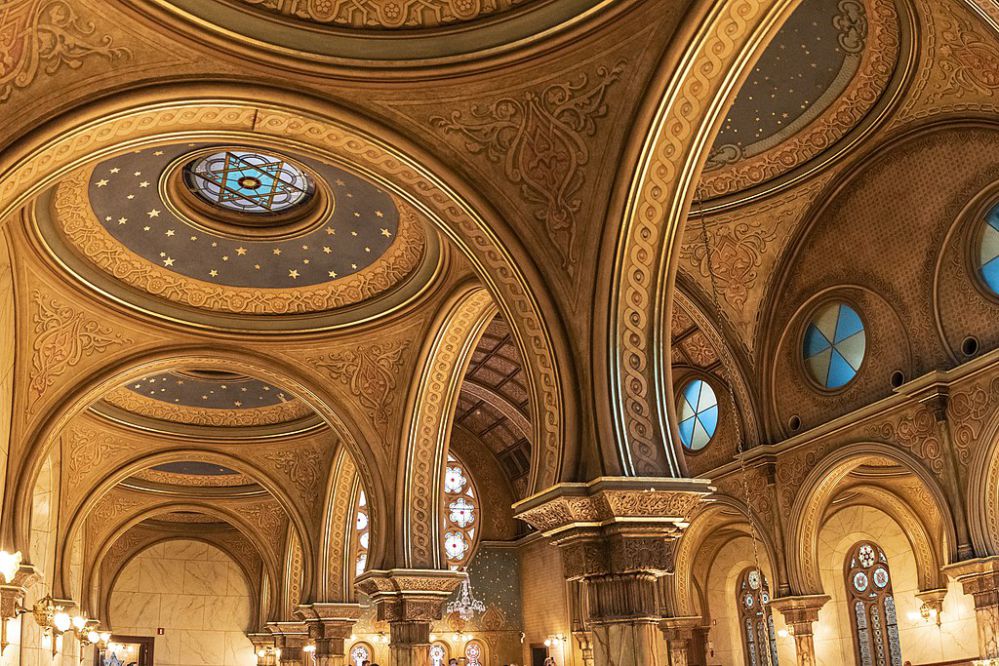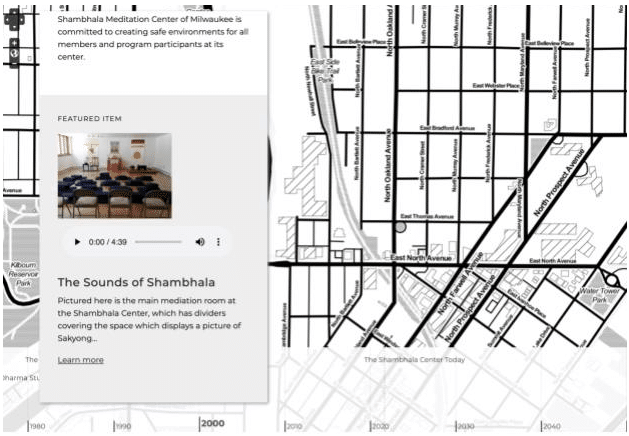
New York’s Eldridge Street Synagogue, now a museum.
By Christopher D. Cantwell
More than thirty years ago, historian James P. Wind published Places of Worship: Exploring Their History as part of the American Association for State and Local History’s Nearby History series. The text made a compelling case for the importance of houses of worship to a community’s history, and provided a comprehensive guide on documenting and telling these pasts. It is a foundational text, and one that I still assign today.
But the text is in need of some updating.
For starters, “place of worship” is a very Judeo-Christian term. Many who practice some forms of Buddhism would not identify what they do at meditation centers to be “worship,” while other non-Western or non-Christian traditions simply do not occupy space or create records in the same way Wind documents. But on an even more profound level, we now live in an environment where less than half of the U.S. population is even a member of a religious community. In some places, former “places of worship” are now museums, art galleries, theatres, CrossFit gyms, or even breweries—sites of a different kind of worship.
How might the study of local religious history expand to consider these diverse ways of being religious? How might it attend to the diverse repurposing of religious buildings?
These questions in part inspired a digital history project I oversee at the University of Wisconsin-Milwaukee called Gathering Places: Religion and Community in Milwaukee. The project has students from my department’s public history program partner with religious communities throughout the city to document their history. Over the course of the semester, students study these communities by writing architectural profiles, conducting oral histories, researching in municipal and denominational archives, processing records held by the religious community, and by attending events of significance. All of this material is then published online on a dynamic map of the city that allows visitors to see how the history of Milwaukee’s religious landscape has changed over time.

The home page of Gathering Places: Religion and Community in Milwaukee. Each dot on the interactive map corresponds to the history of a religious community. As one scrolls through the timeline on the bottom, the dots move to show how religious communities relocate or site are repurposed.
But the project also does something more than just map church history. Rather than focus explicitly on the history of religious communities, the project also documents the history of religious or religiously-used buildings in order to attend to the diverse ways that people who practice religion make and repurpose space. So, in addition to documenting the history of Catholic parishes or Protestant churches, the project has also studied how an old Nazarene church became a communal art space; how a former public library turned into a Christian Science Reading Room; and how a Christian Science Reading Room became the Chinese Christian Church of Milwaukee. This more expansive approach to the study of “places of worship” has allowed Gathering Places to more accurately reflect the diverse religious landscape that animates Milwaukee today.

Milwaukee’s Shambhala Center meets in a building that was once a mechanic’s shop.
We call these sites “gathering places” in part to get away from the Christocentric baggage of the term “places of worship”; and in part because “gathering place” is one of the interpretations for the Potawatomi word from which “Milwaukee” derives. But we have also come to realize that the study of “gathering places” might be a paradigm that could influence how local and public historians approach the topic of religion more broadly. Because religious sites—in whatever form they take—are ultimately about the ways in which people gather. They are sites where religions and communities form and shape each other; and they are ripe for research and interpretation.
So, as local historians continue to turn to Wind’s classic text to study the religious life of their community, it’s also worth documenting how an old car wash might have become a Buddhist meditation center, how a Lutheran church transformed into an Islamic Society, or how a congregation diversified its space to include a local theatre. Because these are the religious histories our present moment contains.
Christopher D. Cantwell is an assistant professor of public and digital history at the University of Wisconsin-Milwaukee. Learn more about AASLH’s AASLH Religious History Affinity Community here.



